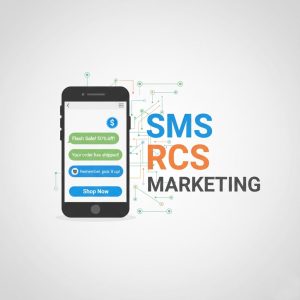Tips for Targeting Audiences on Streaming Services: A Marketer’s Guide

Why Audience Targeting on Streaming Is Crucial Today
Streaming services have completely changed the way people consume content. From Netflix and Hulu to YouTube, Roku, and Amazon Prime Video, millions of users are now spending hours daily on ad-supported streaming platforms.
For marketers, this shift presents an enormous opportunity — but only if you can effectively target your audience on streaming services.
Unlike traditional TV, advanced targeting, real-time analytics, and personalized messaging. But the key to success lies in your strategy. In this guide, we’ll walk through the most effective tips for targeting audiences on streaming services, so you can reach the right people, at the right time, with the right message.
What Makes Audience Targeting on Streaming So Powerful?
Before we dive into the tips, let’s understand what makes targeting on streaming platforms uniquely effective:
-
Data-Driven: Streaming platforms collect user data, from watch history to login devices.
-
Multi-Device Reach: You can target users across Smart TVs, phones, laptops, and tablets.
-
Contextual Precision: Ads can be placed within content that aligns with user interests.
-
Programmatic Ad Buying: Allows for real-time bidding and efficient budget use.
This combination of behavioral data and advanced ad tech enables brands to deliver highly relevant, non-intrusive ads — increasing engagement and ROI.
1. Define Your Ideal Streaming Audience
The foundation of any targeting strategy is knowing exactly who you’re trying to reach. Define your buyer persona with the following attributes:
-
Age, gender, location
-
Income, interests, viewing habits
-
Devices used for streaming
-
Content preferences (genres, creators, time of day)
Use CRM data, platform insights, or third-party tools like YouGov, Nielsen, or AudienceProject to build detailed audience segments.
Pro Tip: Don’t over-segment too early. Start broad, then refine based on performance data.
2. Use Behavioral Targeting Based on Streaming Habits
Streaming marketing provide behavioral data that allows advertisers to reach users based on:
-
Shows and genres watched
-
Binge-watching frequency
-
Time of day content is consumed
-
Preferred ad formats (skippable vs. non-skippable)
For example, a health food brand could target users who frequently watch wellness or fitness content across platforms like Hulu or YouTube.
3. Leverage Contextual Targeting to Increase Relevance
Contextual targeting ensures your ads appear in content relevant to your product or message.
Example:
If you sell camping gear, your ad might appear before a survival documentary or outdoor adventure vlog.
This form of targeting is especially helpful in a cookie-less environment, as it doesn’t rely on personal data but matches ad creative to content themes.
4. Utilize First-Party Data for Retargeting
First-party data (collected from your own website or app) is gold when it comes to streaming ads.
Ways to use it:
-
Retarget users who visited a product page but didn’t convert
-
Show upsell content to recent customers
-
Personalize offers based on past purchase behavior
How to apply: Integrate with DSPs like The Trade Desk, Google DV360, or Amazon DSP to activate this data across streaming platforms.
5. Geo-Targeting: Match Ads to Local Audiences
Streaming services allow for pinpoint geographic targeting, even down to zip code level.
Use cases:
-
Local business promotions
-
Event-based advertising (e.g., concerts, festivals)
-
Weather-specific offers (e.g., cold drinks in heatwave regions)
Combining geo-targeting with other filters like content type or device type boosts precision.
6. Target by Device Type and Streaming Behavior
Different demographics prefer different screens:
-
Gen Z: mobile-first, short-form content
-
Millennials: mix of mobile and laptop
-
Families: smart TVs and tablets
Design custom creatives for each device. For example, vertical video works well on smartphones, while a cinematic ad performs better on connected TVs.
7. Use Lookalike Audiences to Scale Smartly
Once you’ve found a high-performing audience, use lookalike modeling to reach similar users.
Lookalike audiences are built from:
-
Website converters
-
High-LTV customers
-
Email subscribers
Platforms like Facebook Audience Network, Amazon DSP, and Roku OneView offer built-in tools to expand your reach without sacrificing relevance.
8. Run A/B Tests for Continuous Optimization
Effective audience targeting is not a set-it-and-forget-it task. Use A/B testing to refine your campaigns:
-
Test different audience segments
-
Vary creatives for the same audience
-
Compare performance across devices and platforms
Monitor key KPIs like:
-
Completion rates
-
Engagement
-
Click-through rates
-
Cost per completed view (CPCV)
9. Align Ad Creative with Audience Intent
No matter how precise your targeting, irrelevant creatives will kill your results. Tailor your messaging to match audience mood and platform context.
Examples:
-
A user watching comedy content might prefer a humorous, light-hearted ad.
-
Someone streaming a serious documentary may respond better to a fact-driven, emotional message.
Customize your tone, visuals, and call-to-action (CTA) accordingly.
Bonus: Best Streaming Platforms for Audience Targeting
Here’s a breakdown of the top streaming platforms and their targeting strengths:
| Platform | Strengths |
|---|---|
| Hulu | Robust ad tech, genre + behavioral targeting |
| YouTube | Massive scale, precise keyword/contextual ads |
| Roku | Device-level targeting, strong CTV analytics |
| Peacock | Offers real-time ad inventory and personalization |
| Amazon Freevee | Access to Amazon shopper data for targeting |
Final Thoughts: Mastering Streaming Audience Targeting
Targeting audiences on services isn’t just about demographics — it’s about behavior, context, devices, and timing. By combining first-party data, real-time insights, and creative flexibility, brands can deliver relevant messages to high-intent viewers.
To succeed in this growing space:
-
Start with defined personas
-
Use behavioral and contextual insights
-
Continuously test and optimize
-
Match your creative to the moment
As ad-supported streaming continues to grow, brands that adopt these audience targeting strategies now will stay ahead of the competition and drive measurable impact in a crowded digital world.





